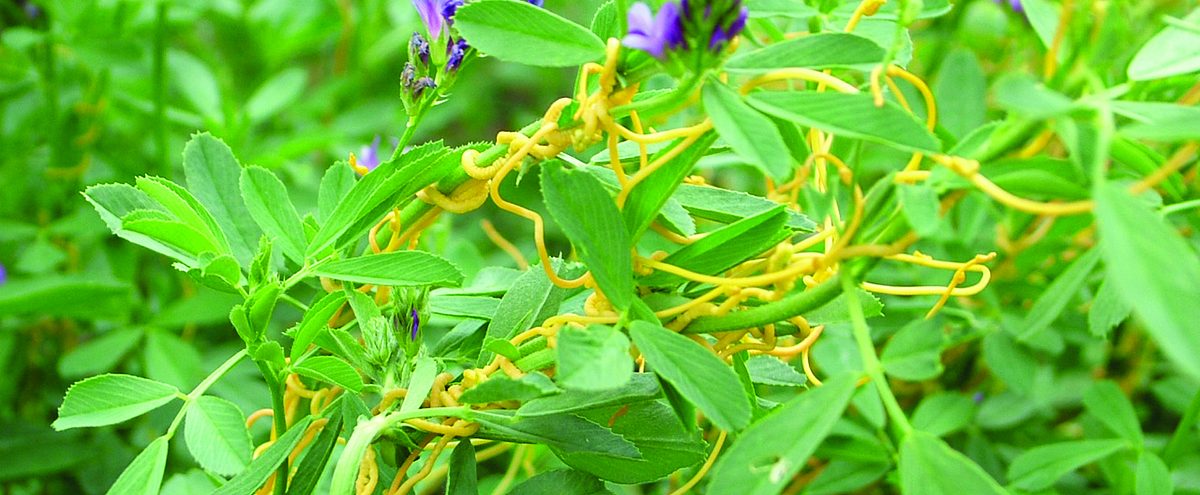
Golden dodder

Golden dodder is devastating to irrigated industries, having the ability to quickly invade lucerne, vegetable, and fruit crops, while also out-competing native vegetation along the river and wetlands. It is important to recognise and destroy new infestations before they become established.
What is golden dodder?
Golden dodder is a parasitic climbing weed that grows attached to a wide range of host plants. It has thread-like bright yellow leafless stems that produce tendrils and coils that attach themselves with a root-like sucker penetrating the host to source water and nutrients.
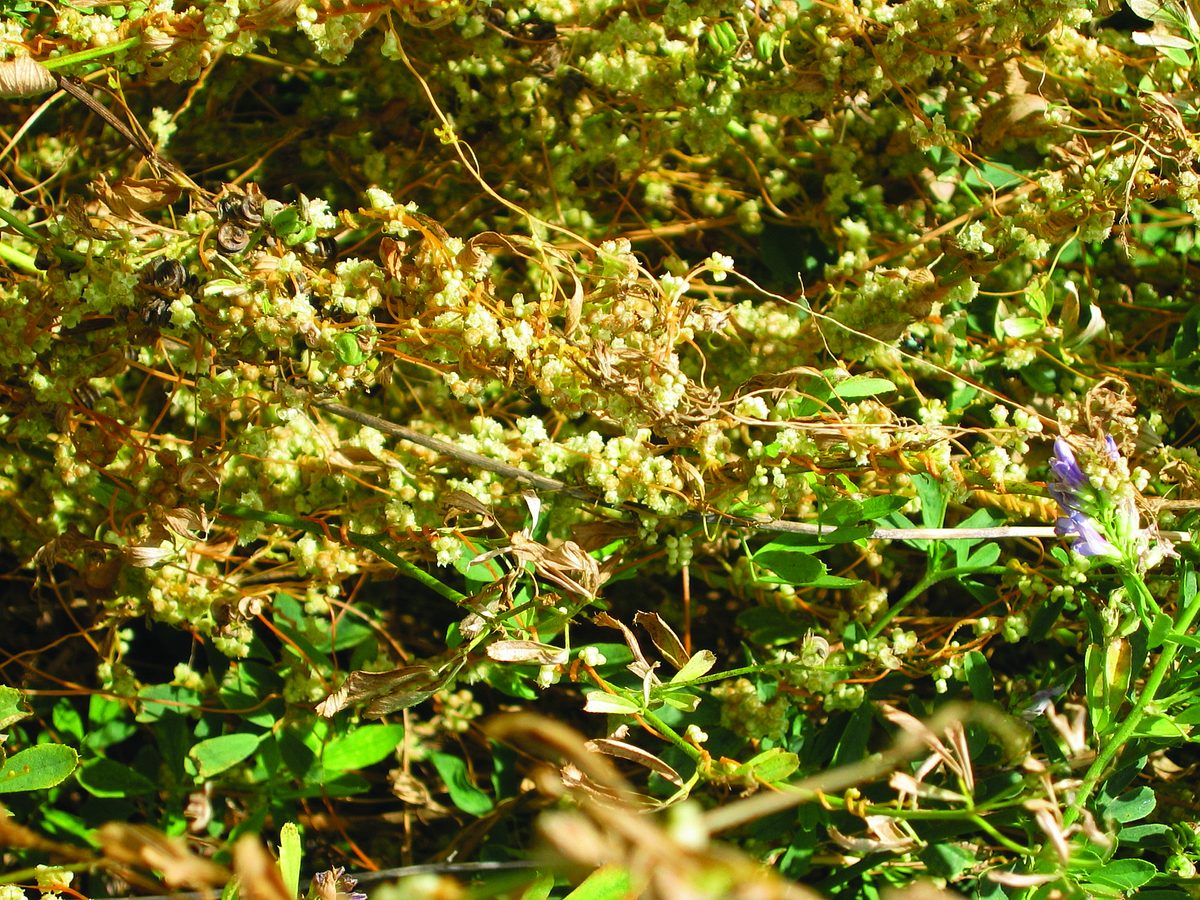
Golden dodder has masses of tiny white or greenish flowers, and globe-shaped fruits that contain seeds that germinate during summer. These seeds can remain viable for up to 60 years in good conditions, but golden dodder also reproduce from stem fragments. Once a seed has germinated, it only lives for a few days unless the shoot can attach itself to a host plant such as noogoora burr.
Where is golden dodder found?
Golden dodder has been largely controlled in the Murraylands and Riverland region, however seeds may be lying dormant in the soil at previous outbreak sites. Previous outbreaks have occurred from contaminated soil or the movement of produce from the Riverland and hosts have included a wide range of broadleaf weeds, lucerne, vegetables, and tree seedlings.
Golden dodder has been found on agricultural land, sand dunes, disturbed areas, grasslands, pastures, riparian systems, roadsides, and wetlands. It is common along the Murray River flood plain from the Victorian/NSW border, with isolated outbreaks below Overland Corner and the Marne River.
Recorded golden dodder outbreaks in the Murraylands and Riverland region*
What are the impacts of golden dodder?
Golden dodder is a parasite to lucerne and other crops, robbing it of sunlight, nutrients and water. It significantly reduces crop yields and infested areas may need to be quarantined, causing significant financial loss. High levels of dodder are toxic to cattle and horses.
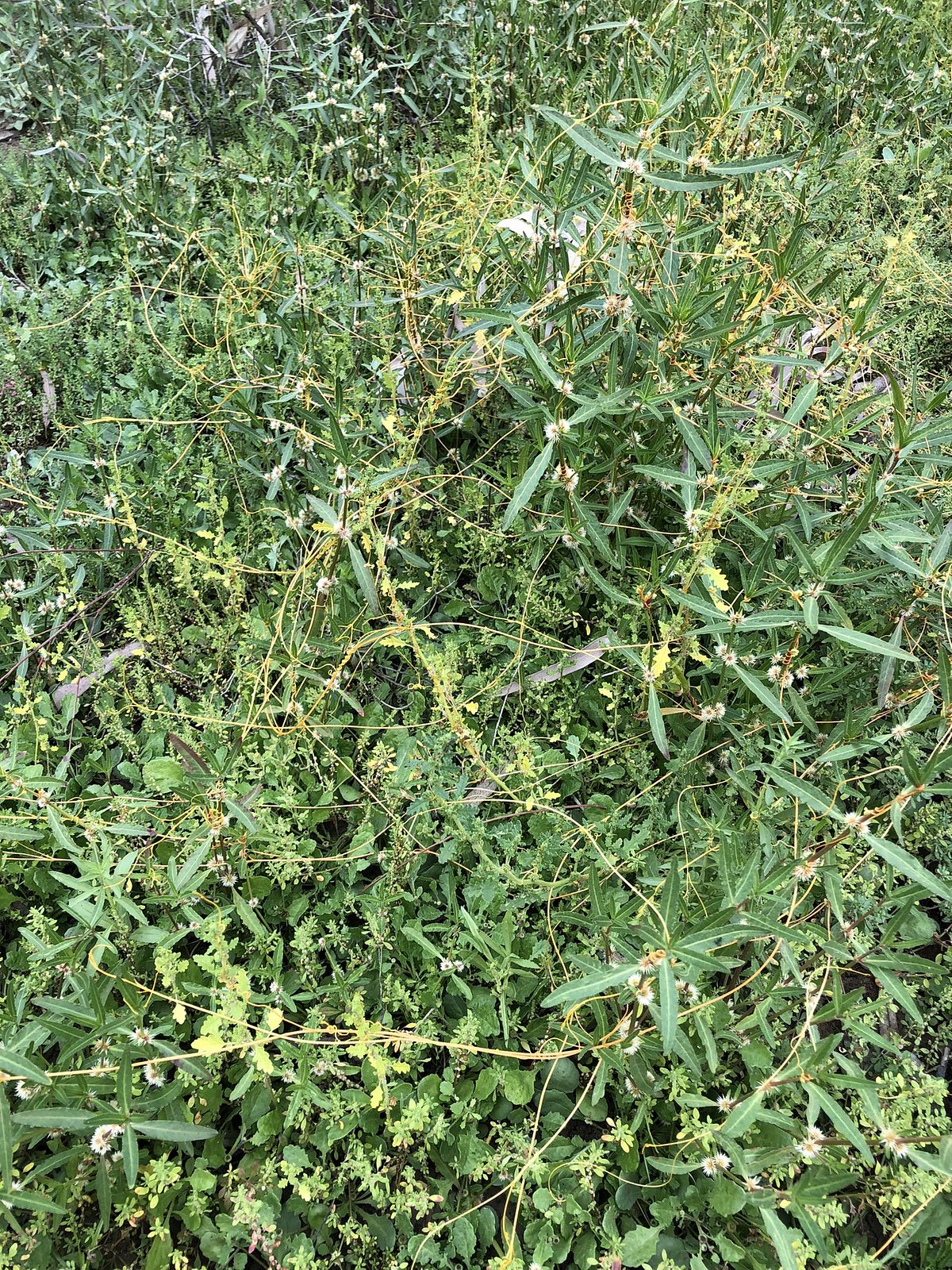
What is the declared status of golden dodder?
Golden dodder is notifiable in South Australia and is subject to the following restrictions:
- Land managers must notify the Murraylands and Riverland Landscape Board of any infestation of the plant found on their land,
- Land managers must take reasonable steps to kill plants and prevent their spread,
- Plants must not be sold or traded in any way, including as a contaminant of anything,
- Plants must not be transported on a public road, including as a contaminant of anything, and
- Plants must not be transported into the region.
When is the best time to monitor for and control golden dodder?
Golden dodder is most active during spring and summer, but land managers should monitor properties all-year round. Spot spraying can be undertaken during spring and summer or destruction via burning can be done all year round.
For more information about control options, visit PIRSA's website.
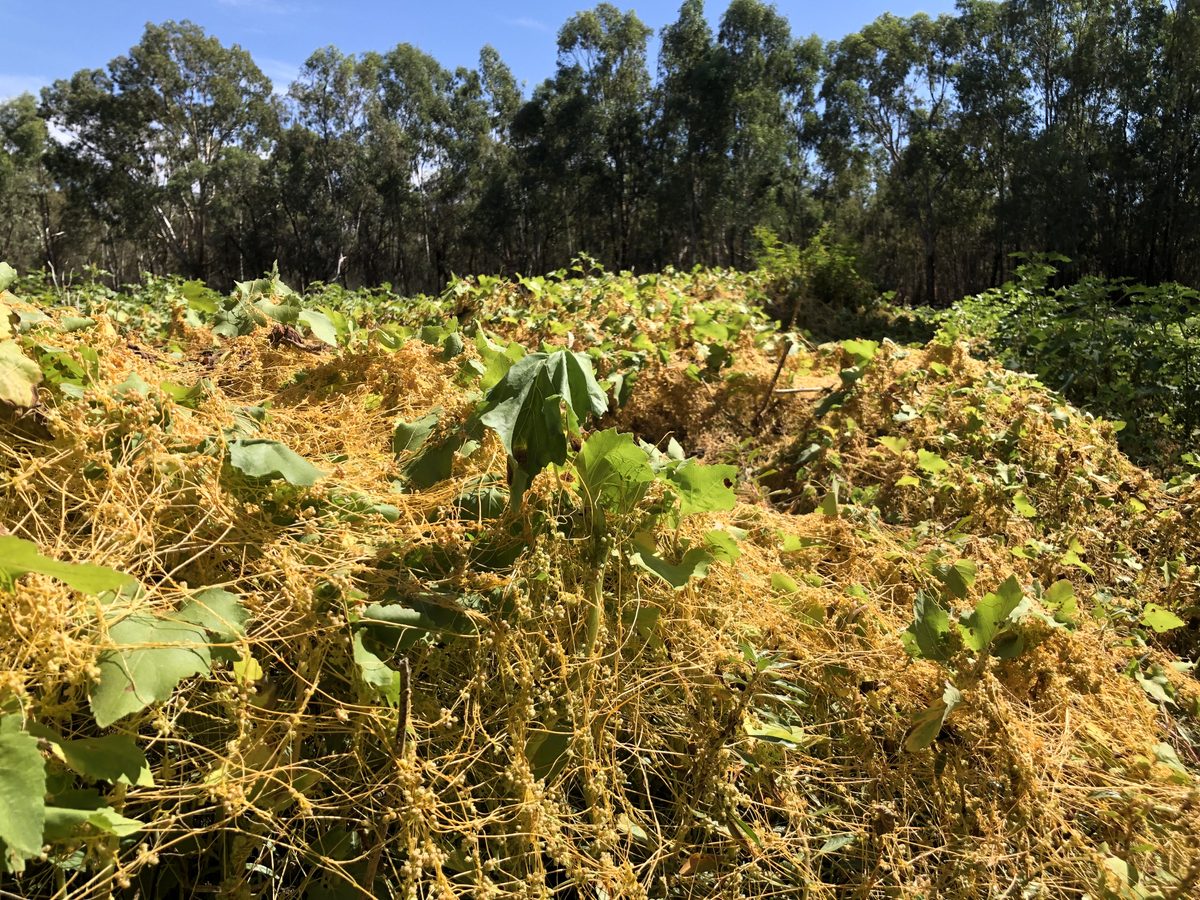
How can golden dodder be controlled?
Golden dodder is a difficult weed to eradicate, growing rapidly and can setting seed after only a few weeks of growth. Additionally, golden dodder seeds can survive in the soil for long periods.
If golden dodder is found, control strategies need to be implemented immediately. Refer to PIRSA's website for specific control methods including recommended herbicides and dosing rates.
Preventing it from entering your property and being vigilant in spotting and destroying new outbreaks is the best form of control. It is essential that control begins as soon as soon as an infestation is noticed, and adequate follow-up measures are in place to ensure the effectiveness of control methods.
How can golden dodder outbreaks be prevented?
Stopping the entry of golden dodder onto your property is the best control measure. Early detection is necessary and lucerne paddocks should be inspected thoroughly before first cut to detect golden dodder growth. Pasture paddocks need to be inspected after rainfall in late spring.
Mapping existing infestations at the end of summer will help in checking for reinfestations the following spring. All workers on the property should be made aware of golden dodder and be able to identify it.
What to do if you suspect a golden dodder outbreak
Notify the Murraylands and Riverland Landscape Board in the first instance.
If the plants are actively growing on your land, apply glyphosate through spot spray immediately. Always follow up after the initial efforts.
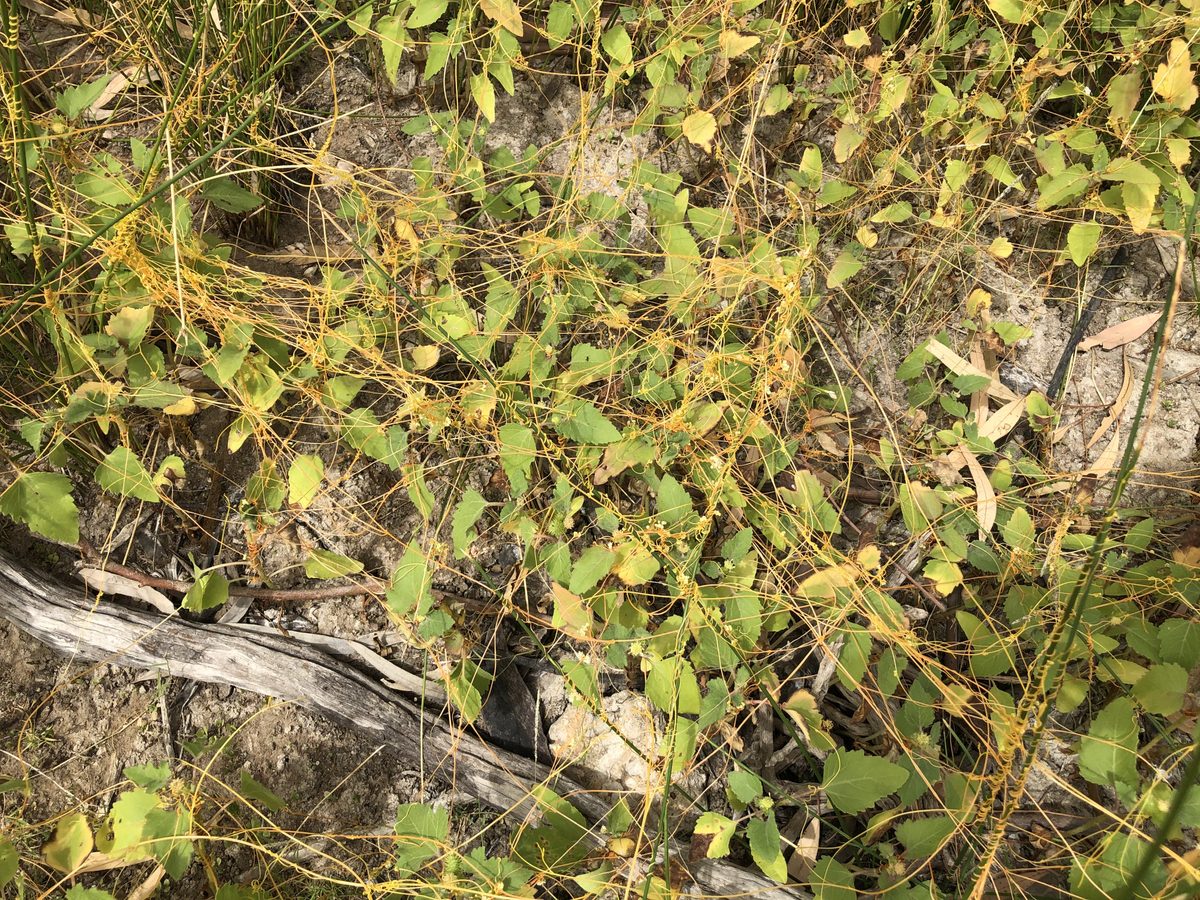

This project is supported by the Murraylands and Riverland Landscape Board with funding through the landscape levies.
*Map provided as a guide only. Mapped outbreaks are not necessarily current or comprehensive.